Fertilizer is a concentrated source of nutrients that feeds the seedlings rather than the soil. Garden compost, manure, bird droppings and seaweed are also used to feed plants, but contain low concentrations of the substances. These compounds are more suitable for structuring the soil.
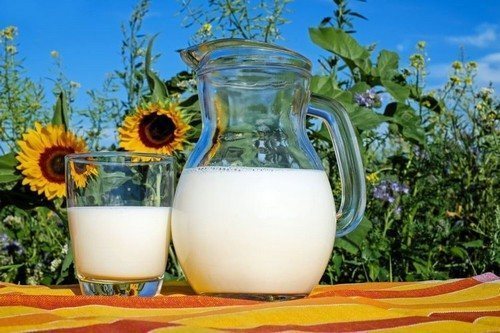
Advantages of dairy fertilizers for vegetables:
- milk is a good source of calcium and microelements;
- the content of healthy proteins, vitamin B and sugar improves the health of seedlings and has a positive effect on productivity;
- foliar feeding acts as an antifungal agent to prevent infection by viruses and powdery mildew;
Along with the advantages of using dairy fertilizers, the disadvantages must also be taken into account. These include:
- if too much milk is used, bacteria and fat will spoil, causing unpleasant odors, wilting and poor growth of vegetable crops;
- skimmed milk powder can cause black rot or soft rot and leaf spotting.
On a note. Raw milk is more suitable for making feeds because it has not been exposed to heat, which alters the components that provide ideal nutrition for soil and vegetables.
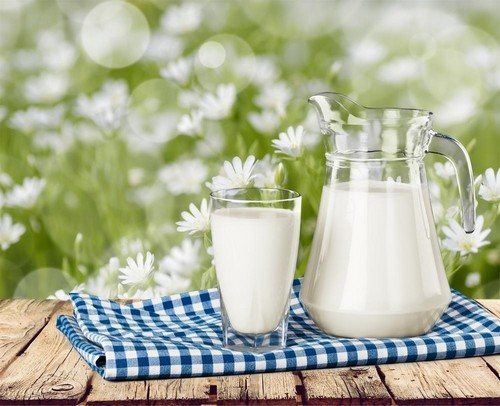
The fat, lactose and carbohydrates contained in milk are not necessary for seedlings. Proteins are rich in nitrogen, but not in the form in which plants synthesize it. However, milk contains calcium and minerals that improve growth.
Feeding vegetables using the root method
When applying fertilizer around the roots, make sure the soil is moist. Fertilizers have the least effect in dry soil and can cause burns to the root system.
Recipe No. 1
Milk and molasses. This combination will protect plants from weeds, since the increased biological activity of milk and molasses releases phosphorus that is inaccessible to horses and creates soil conditions that are unfavorable for the germination of weed seeds.
For feeding you will need:
- 3 tablespoons molasses;
- 500 ml unpasteurized milk;
- 2 liters of water.
Preparation:
- Water is mixed with milk until smooth.
- Molasses is added to the solution. Everything gets mixed up.
The resulting solution is used as a spray to treat compost and garden soil before planting, and also as needed when weeds and soil insects appear.
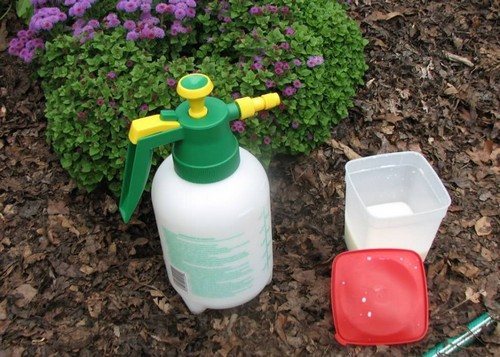
Recipe No. 2
100% milk. The soil around the seedling, exposed to milk splashes, has a beneficial effect on the growth and health of vegetable crops, which remain resistant to disease even in the presence of pathogenic microorganisms and soil insects. Among other things, spraying whole milk improves the soil's ability to absorb oxygen and water, which has a beneficial effect on plants.
Recipe No. 3
When vegetable crops lack sufficient calcium, they appear stunted and do not grow to their full potential. In addition, at the end of flowering, rot is observed on pumpkins, tomatoes and peppers.
For feeding, milk is used in diluted form (50% milk and 50% water) to water the plants around the base.
Root feeding of vegetables is carried out twice - at the beginning of the growing season and in the middle of the season.
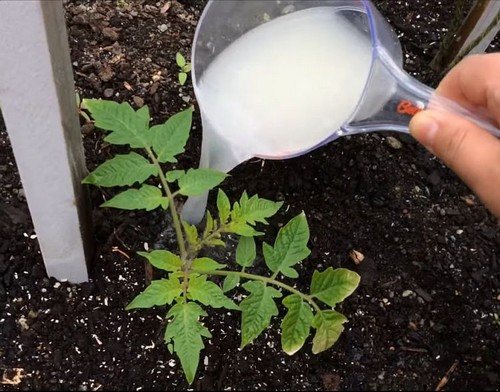
Recipes for foliar milk feedings
Under certain conditions, leaf nutrition has an advantage over the introduction of fertilizers into the soil. Fertilizer sprayed on the leaves is the most effective way to increase yield and health. Tests have shown that foliar feeding increases yields from 12% to 25% compared to root feeding.
Tests carried out in different locations and environmental conditions show that:
- When fertilizers are applied to the leaves, the plant absorbs more than 90% of the substances. When the same amount is applied to the ground, only 10% is used.
- In sandy loam soils, foliar fertilizing is 20 times more effective compared to fertilizers applied to the soil.
Foliar feeding is recommended when environmental conditions limit nutrient uptake by roots. Such conditions include high or low soil pH, erratic temperatures, root diseases, the presence of pests that affect nutrient absorption, and so on.
On a note. Do not spray chemical pesticides or fertilizers after applying foliar fertilizers. This action will negatively affect the beneficial ingredients in the milk that help the plants.

Recipe No. 4
Milk is used to combat fungal diseases, tobacco mosaic virus, mold, rot and powdery mildew. Spraying diluted milk with water in a ratio of 1 to 2 on the surface of the leaves reduces the susceptibility of seedlings to infection.
In order to use the solution as a foliar feeding, you need to place the mixture in an aerosol can and spray it on the leaves of vegetable crops when the plant is in bright sun. They will absorb the milk solution, taking what is necessary for further growth and fruiting. However, you should be careful when handling tomatoes because they are susceptible to fungal diseases. If milk fertilizers remain on the leaves for too long, you can gently wipe them with a damp cloth or spray with water.
Spraying is repeated every 10–14 days.
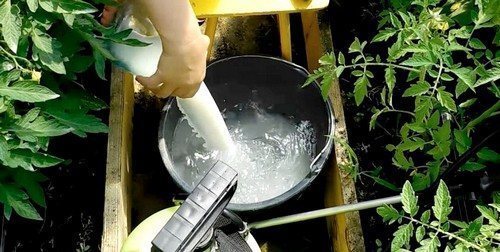
Recipe No. 5
Milk and iodine. This tandem acts not only as a foliar fertilizer for vegetables, but also as a healer and protector against parasitic fungi, rot, powdery mildew, bacteriosis and other infections and microorganisms that attack plants.
For the solution, it is better to use fresh milk passed through a separator.
For milk-iodine subcortex you will need:
- 10 liters of water;
- 1 liter of skim milk;
- 15 drops of iodine.
Preparation:
- Mix a liter of milk with iodine in a container until smooth.
- The resulting mixture is poured into a bucket of water. The solution is mixed and poured into a garden sprayer for further treatment of plants.
Milk-iodine foliar feeding is sprayed onto the leaves every 2 weeks, choosing a cloudy, windless day or evening for the procedure.
The solution is also used as a root watering for vegetables when a seedling is infected with root rot.
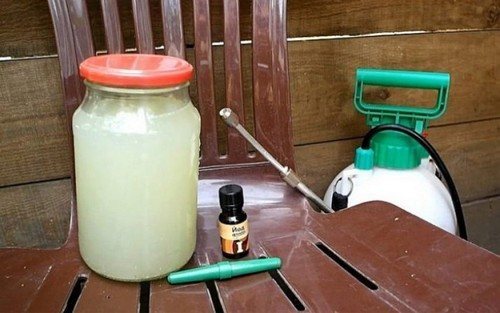
Watering and misting liquids gives seedlings not only the water they need to grow, but also gases and nutrients that are not found in water. Milk helps protect plants by changing the pH level of leaves to avoid diseases that can harm the vegetable crop. It also controls soil pH levels and promotes the growth of good bacteria in the soil.


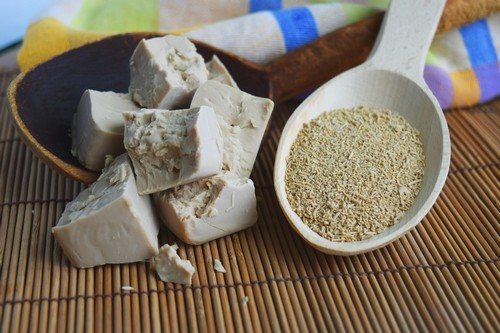
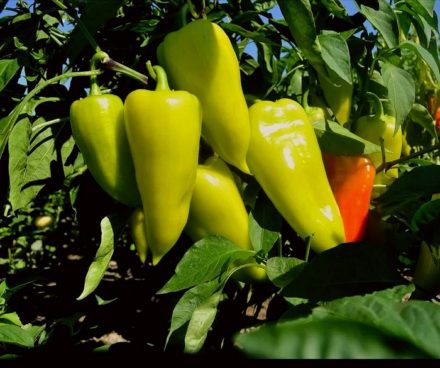


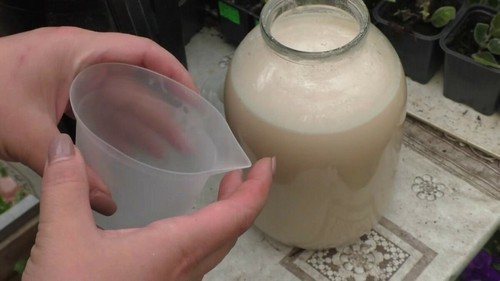
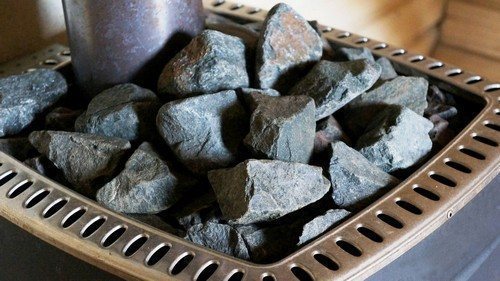
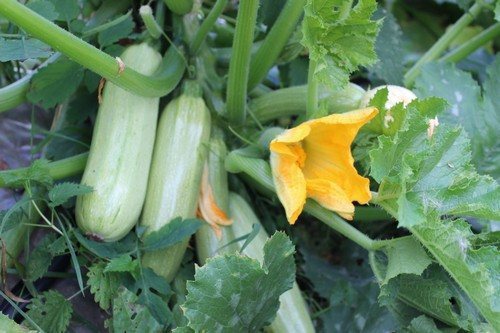

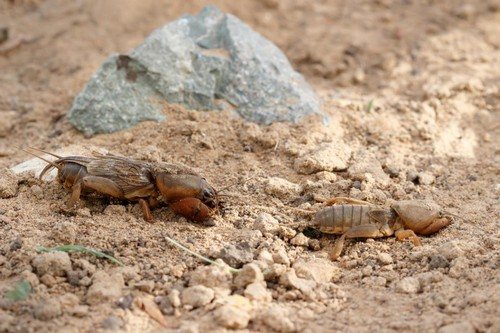
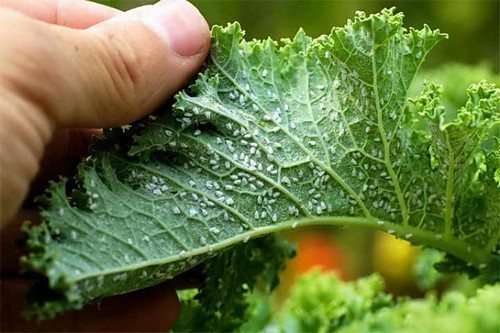
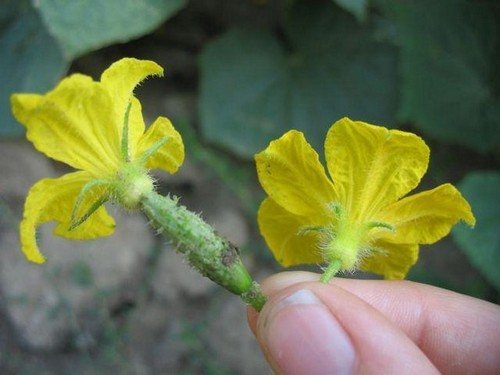
You won't understand! Someone writes 1 teaspoon of milk per 1 liter of water. And here there is even 50/50.